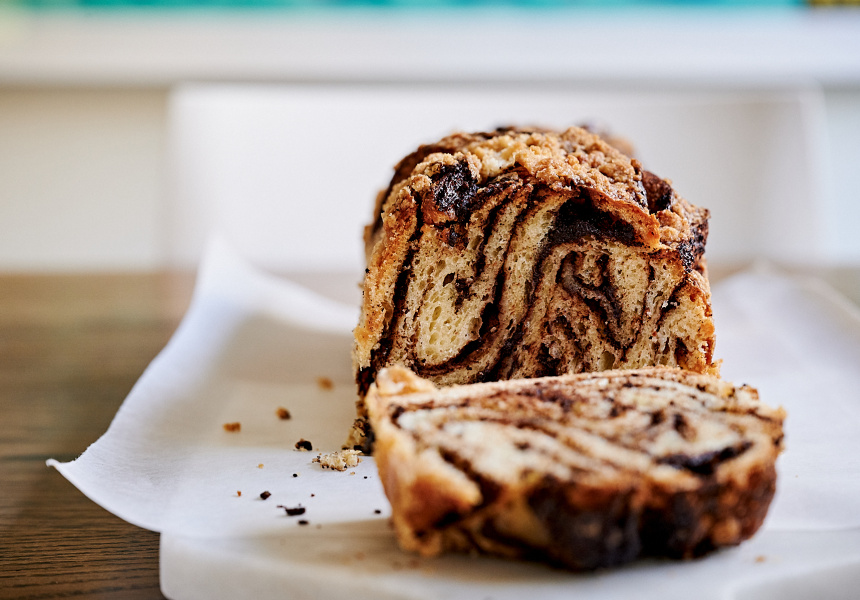As Seinfeld’s Elaine Benes said, “you can’t beat a babka”. Fillings range from the classic chocolate (often fortified with chocolate chips) to cinnamon to Nutella to hojicha. There are even savoury and gluten-free versions, too.
If lasagne is Australia’s national crisis dish, then babka might just be Melbourne’s lockdown dessert. In the last few months a new batch of local babka-makers has risen, inspired in part by the cake’s popularity in the US and Israel, where chefs such as Yotam Ottolenghi and Uri Scheft have created rich, addictive – and highly Instagrammable – versions of this traditional Jewish dessert.
Babka has evolved as Jewish bakers and chefs moved around the world, bringing their culinary traditions to new places. The dense, yeasty cake originated in the Jewish communities of 19th-century Poland, where it was first made with extra challah dough and filled with jam or cinnamon for a Sabbath treat. But the modern babka is a more decadent cake made with enriched dough (with a long rise) that’s filled, rolled, strategically cut and then twisted into a loaf pan, resulting in a lusciously cracked, chocolatey surface and an entrancing, swirly cross-section that demands attention on social media. Many European Jewish communities have some variation of babka (the kugelhopf and kokosh are close cousins), and Melbourne Jews have been making it for generations – both at home and in Jewish bakeries and delis around Balaclava, Ripponlea and Elsternwick.
But right now, there’s a new generation of babka-makers churning out loaves at home and in cafes and pop-up bakeries across Melbourne. Why the resurgence? Well, here’s my theory: babka is the perfect lockdown cake. It’s comforting, pretty, usually chocolatey, big enough to feed a family or split between friends, and forgiving enough to keep in the freezer if you want to savour it (just pop a slice in the microwave or toaster to heat it up). Similar to other lockdown comfort foods such as dumplings, soup and sourdough bread, babka evokes a simple, old-world nostalgia.
Read the article by Elissa Goldstein on Broadsheet.

